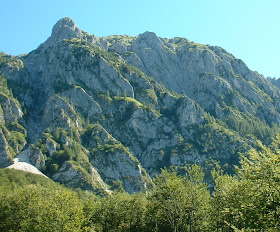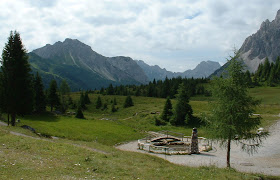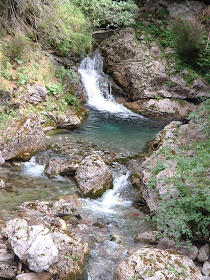Tried another climb in the beautiful Alpago area to redeem myself for bonking so hard on Wednesday. Today it's the climb up to Pian Formosa from Puos d'Alpago. Skipped the warm up from Vittorio Veneto this time, but the starting 5 km climb from Puos up to Chies d'Alpago isn't too bad, beginning at 5-6% and then gradually increasing to 9-10%.
After Chies it gets steeper, with long stretches of 10-11% on the 3 km climb to Alpe di Mont. Here the fun begins: 300 meters of 16.7%, then 400 meters of 15%, followed by a half kilometer of 13%. I tried pedaling at a lower cadence when standing than last time to stay within my lungs' limits, and it seemed to work. Imagine stomping grapes versus dancing on tiptoes, and you get the picture. Also the very steep bit was about half as long today, which made a big difference.
Pian Formosa (1204 meters) is a pretty meadow with cows and a few farm buildings in the shade of a rocky ridge leading up to Monte Messer, 2230 meters. There are also some nice big beech trees in the area.
Instead of going down the same way, I turned down the road to Malga Cate, which goes along the edge of the gorge to Tambre. There you rejoin the wide main road which loops and swerves all the way back down to Puos. Very fun scenic ride.
Monte Dodala from Pian Formosa































































